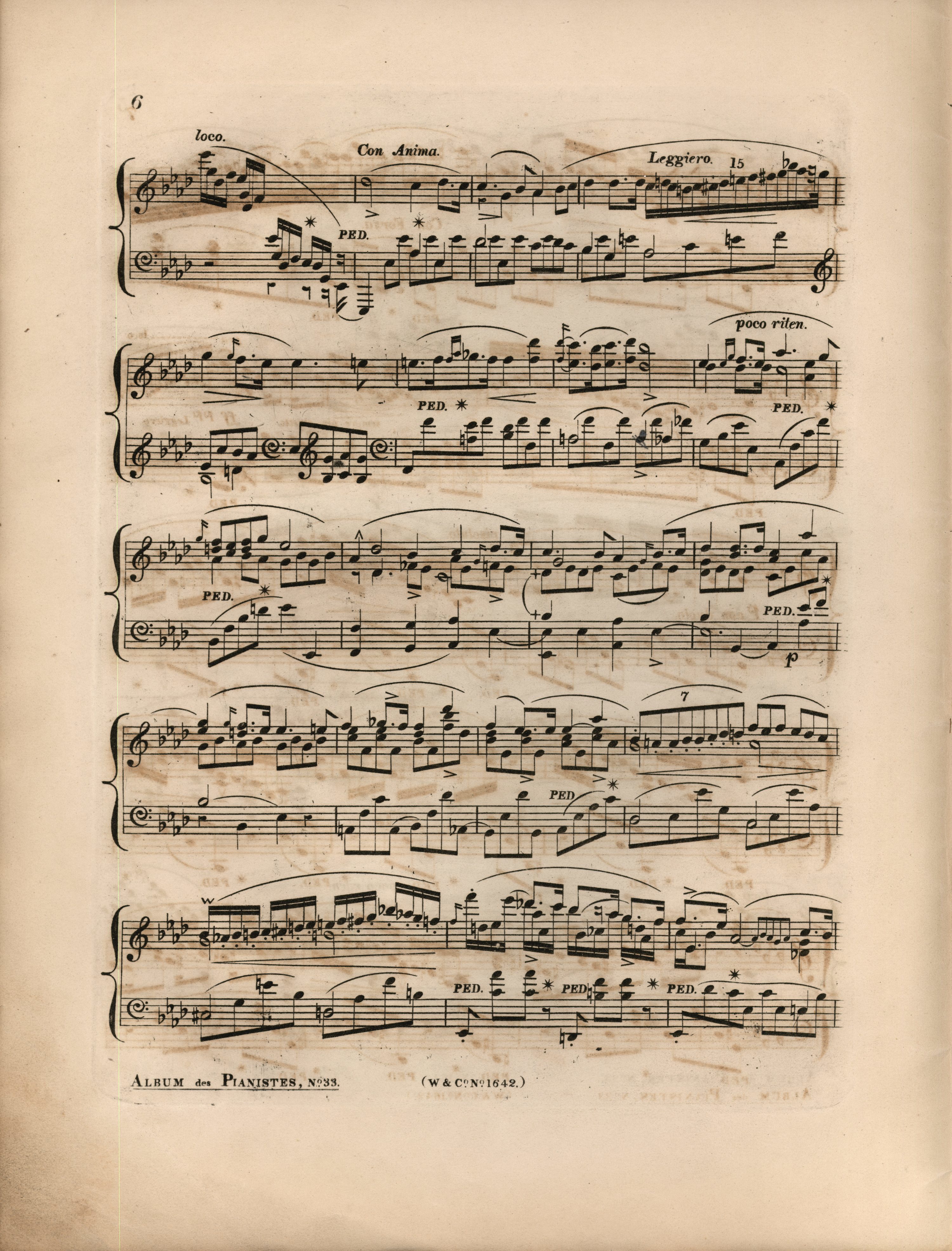



In A it is hard to state what the short slur written under the quavers in the L.H. concerns: it may be both the pair of quavers in the top voice, as it was interpreted in the editions (except for EE1, in which it was overlooked) or the crotchet of the bottom voice, which would mean that the slur leads to the b minim in the next bar. In analogous bars 283-284, the notation is very similar: a short slur more or less at the pitch of the a
minim in the next bar. In analogous bars 283-284, the notation is very similar: a short slur more or less at the pitch of the a crotchet, reaching quite far beyond the second quaver (f1), but not reaching even the bar line, not to mention exceeding it. It means that, according to us, the exposition and recapitulation could be analysed together, since most probably Chopin did not foresee any differences in notation in this place. The following observations arise:
crotchet, reaching quite far beyond the second quaver (f1), but not reaching even the bar line, not to mention exceeding it. It means that, according to us, the exposition and recapitulation could be analysed together, since most probably Chopin did not foresee any differences in notation in this place. The following observations arise:
-
In bar 135 in A, in the place where the a
 crotchet and the e
crotchet and the e 1 quaver are written, one can see erasures; they could have impeded writing the slur closer to the quavers, which is an argument for the accuracy of the interpretation of the editions. However, the same reasoning cannot be applied in bar 283 – one does not see anything that could have stopped Chopin from writing the slur close to the quavers, yet it is placed further (lower) and it reaches almost the bar line. The notation in the recapitulation suggests a continuation of the slur to such an extent that GE1 led this slur to the beginning of bar 284 (although it is hard to consider the engraver of GE1 to be an authority within the scope of interpreting slurs of A, the majority of his distortions came rather from his routine, disrespectful approach to the Chopin notation, which is not the case in this situation).
1 quaver are written, one can see erasures; they could have impeded writing the slur closer to the quavers, which is an argument for the accuracy of the interpretation of the editions. However, the same reasoning cannot be applied in bar 283 – one does not see anything that could have stopped Chopin from writing the slur close to the quavers, yet it is placed further (lower) and it reaches almost the bar line. The notation in the recapitulation suggests a continuation of the slur to such an extent that GE1 led this slur to the beginning of bar 284 (although it is hard to consider the engraver of GE1 to be an authority within the scope of interpreting slurs of A, the majority of his distortions came rather from his routine, disrespectful approach to the Chopin notation, which is not the case in this situation). -
In the G-A
 -a
-a -b
-b -B
-B -e
-e bass sequence one can distinguish three two-note steps, separated with octave leaps. While the pizzicato in the cello part does not particularly emphasise this division, the slurs in the piano part are arranged in such a way – both in the exposition and in the recapitulation we see a G-A
bass sequence one can distinguish three two-note steps, separated with octave leaps. While the pizzicato in the cello part does not particularly emphasise this division, the slurs in the piano part are arranged in such a way – both in the exposition and in the recapitulation we see a G-A slur in bar 135 (283) and a B
slur in bar 135 (283) and a B -e
-e one in bar 136 (284). Therefore, it seems natural to consider the discussed slurs as embracing the middle link of this sequence.
one in bar 136 (284). Therefore, it seems natural to consider the discussed slurs as embracing the middle link of this sequence.
In no case do the above observations give reasons to state how Chopin understood his slurs. However, they make us adopt to the main text the a -b
-b slurs.
slurs.
Compare the passage in the sources »
category imprint: Graphic ambiguousness; Differences between sources
issues: Inaccurate slurs in A
notation: Slurs




